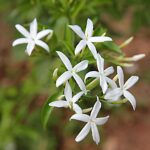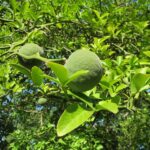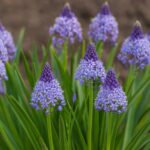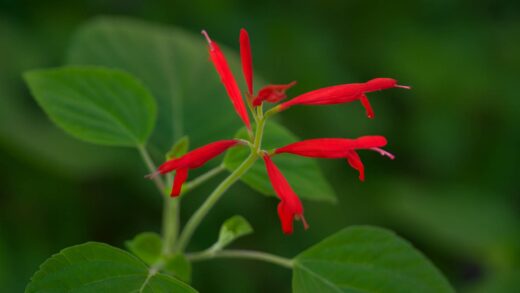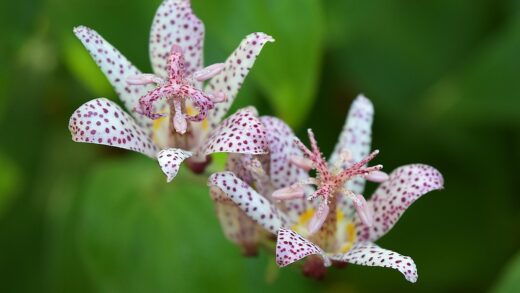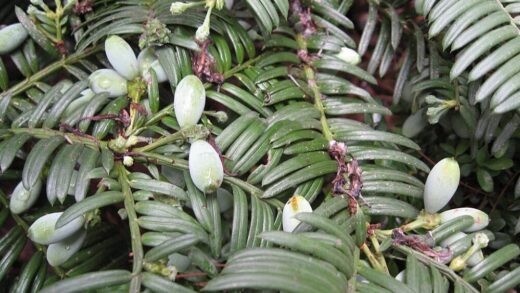Understanding the water requirements of Jerusalem artichokes is key to cultivating a truly impressive crop. While these plants have a well-deserved reputation for being tough and relatively drought-tolerant, providing consistent and adequate moisture at critical stages of their growth cycle can dramatically increase the size and quantity of the tubers produced. The plant’s needs evolve throughout the season, from the initial sprouting phase to the period of rapid vegetative growth and, most importantly, during the development of the tubers in late summer and autumn. A well-managed irrigation strategy, therefore, is not about constant watering but about providing the right amount of water at the right time.
In the early stages of growth, just after planting, the soil should be kept consistently moist to encourage the tubers to sprout and establish a healthy root system. This initial period is when the plant is most vulnerable. A lack of water can delay or prevent sprouting, while overly saturated soil can cause the seed tubers to rot before they have a chance to grow. Once the shoots have emerged and the plants are actively growing, they are surprisingly resilient to dry spells, thanks to their deep and fibrous root system which is efficient at seeking out moisture. During this phase of rapid stalk and leaf development through late spring and early summer, they will generally only require supplemental watering during prolonged periods of drought.
The most critical period for watering Jerusalem artichokes begins in late summer and extends into early autumn. This is the time when the plants switch their energy focus from vegetative growth to the formation and swelling of the underground tubers. Consistent soil moisture during this phase is directly correlated with tuber size and overall yield. If the soil is allowed to dry out for extended periods during this developmental stage, the tubers will be significantly smaller and the harvest will be disappointing. Therefore, it is essential to monitor soil moisture closely from August onwards and provide deep, infrequent waterings to ensure the soil remains moist several inches below the surface where the tubers are forming.
Despite the importance of water, it is equally crucial to avoid overwatering. Jerusalem artichokes are susceptible to root and tuber rot in waterlogged conditions. The soil should be moist, but not soggy. Good soil drainage is paramount, which is why amending heavy clay soils with organic matter before planting is so beneficial. A simple way to check for moisture is to dig down a few inches with your finger; if the soil feels dry at that depth, it is time to water. By understanding these nuances, a gardener can move beyond simply keeping the plants alive and start managing their water intake to maximize the harvest’s potential.
Natural drought tolerance
The Jerusalem artichoke’s notable drought tolerance is a characteristic inherited from its origins in the grasslands and prairies of North America. These environments often experience periods of inconsistent rainfall, forcing native plants to develop adaptations for survival. The Jerusalem artichoke evolved a highly efficient and extensive root system, composed of both deep-reaching roots to tap into lower soil moisture reserves and a fibrous network of shallower roots to quickly absorb surface water from brief showers. This robust root structure is the primary reason the plant can withstand dry spells that would cause many other garden vegetables to wilt and fail.
More articles on this topic
This inherent resilience means that once the plant is well-established, typically after it has reached about 60 centimeters in height, it requires minimal intervention from the gardener in terms of irrigation during a typical summer. The plant’s large leaves may show some temporary wilting during the hottest part of a dry day, which is a natural mechanism to conserve water by reducing transpiration. However, they will usually recover quickly in the cooler evening and morning hours. This ability to bounce back is a key indicator of its drought tolerance and should not be mistaken for a sign that it needs immediate watering, preventing the common mistake of overwatering.
While the plant can survive on natural rainfall in many climates, it is important to understand the difference between survival and optimal production. The plant’s drought tolerance ensures its survival and the production of at least some tubers to guarantee propagation for the next season. However, to achieve a harvest of large, succulent tubers, this natural tolerance should be supplemented with irrigation during key growth phases. Relying solely on its drought-tolerant nature, especially in a particularly dry year, will almost certainly result in a diminished yield of smaller, more fibrous tubers. The plant will survive, but the crop will not thrive.
The plant’s life cycle also plays a role in its water management strategy. During its period of rapid vegetative growth in early to mid-summer, it focuses on building the tall stalks and extensive leaf canopy. While it uses a significant amount of water during this time, its well-developed root system can usually find what it needs. As the season progresses into late summer and the days shorten, the plant’s hormonal signals shift, initiating tuber formation. It is at this point that its internal priorities change, and a lack of water will directly impact the size of the developing storage organs (the tubers), making this the least ideal time to test its natural drought tolerance.
Critical watering periods
While Jerusalem artichokes are hardy, there are specific periods in their growth cycle where a lack of water can have the most detrimental effect on the final harvest. The first of these critical periods occurs immediately after planting. The seed tubers require consistent moisture in the soil to break dormancy and initiate the growth of roots and shoots. If the soil is too dry during the first few weeks after planting, sprouting can be delayed, erratic, or may fail altogether. Providing a thorough watering at planting time and maintaining a lightly moist soil until the shoots are well-established is crucial for getting the crop off to a strong start.
More articles on this topic
The second, and arguably most important, critical watering period is during tuber initiation and development, which typically begins in late summer and continues through early autumn. This is the stage when the plant is actively forming and enlarging the tubers that will be harvested. A consistent and adequate supply of water during this time is directly linked to the final size and weight of the tubers. Even short periods of drought during this phase can halt tuber growth, and if the soil becomes excessively dry, the resulting tubers may be small, knobby, and of poor quality. Therefore, it is essential to ensure the soil does not dry out from August until the plants begin to yellow and die back.
Recognizing the signs of the beginning of tuber formation can help you anticipate this critical watering period. This phase generally coincides with the time when the plants are flowering or have just finished flowering. The shortening daylight hours of late summer trigger this shift from vegetative growth to tuber production. This is the signal to begin monitoring soil moisture more closely and to provide supplemental irrigation if rainfall is insufficient. A deep watering once or twice a week is far more effective than shallow daily sprinklings, as it encourages the water to penetrate deep into the root zone where the tubers are forming.
Conversely, it is also important to know when to reduce or stop watering. As late autumn approaches and the plant’s stalks and leaves begin to yellow and wither, its water needs decrease significantly. The plant is entering dormancy, and the tubers have largely completed their growth. Continuing to heavily water the patch at this stage can be counterproductive, as it can create overly wet soil conditions that may encourage tuber rot, especially in poorly drained soils. Once the plant’s top growth has completely died back, supplemental irrigation is no longer necessary.
Effective irrigation techniques
When providing supplemental water to Jerusalem artichokes, the technique used can be as important as the timing. The most effective irrigation methods are those that deliver water directly to the soil and the plant’s root zone, minimizing waste through evaporation and preventing moisture from sitting on the leaves. Drip irrigation or soaker hoses are ideal choices for this purpose. These systems release water slowly and directly onto the soil surface, allowing it to be absorbed deeply and efficiently with very little runoff or evaporation. Laying a soaker hose along the base of the rows, preferably under a layer of mulch, is an excellent and water-wise strategy for maintaining consistent soil moisture.
If you are watering by hand with a hose or watering can, it is important to apply the water gently at the base of the plants. Avoid using a strong jet of water that can erode the soil and expose the shallow roots and developing tubers. Instead, use a watering wand or a nozzle with a gentle shower setting. The goal is to simulate a slow, steady rain. It is far more beneficial to give the patch a deep, thorough soaking once or twice a week during dry periods than to provide a light, shallow sprinkling every day. Deep watering encourages the plants to develop a deeper, more resilient root system, making them even more drought-tolerant in the long run.
The time of day you choose to water can also impact the effectiveness of your irrigation. Watering early in the morning is generally considered the best practice. At this time of day, temperatures are cooler and winds are calmer, which means less water is lost to evaporation, and more of it gets to the plant’s roots. Watering in the morning also ensures that the plant’s foliage has ample time to dry before nightfall. Wet leaves overnight can create a humid environment that is conducive to the development of fungal diseases like powdery mildew, which can sometimes affect Jerusalem artichokes.
Finally, the use of organic mulch is a passive but incredibly effective irrigation technique. Applying a thick layer of straw, shredded leaves, or wood chips around the base of the plants after they are established does wonders for water conservation. The mulch acts like a sponge, absorbing water and releasing it slowly into the soil, while also reducing evaporation from the soil surface. This means the soil stays moist for longer periods after rainfall or irrigation, significantly reducing the frequency with which you need to provide supplemental water. This simple addition to your cultivation practice is one of the most effective ways to manage the crop’s water needs.
Recognizing signs of water stress
Being able to identify the signs of water stress, both under-watering and over-watering, is a key skill for properly managing your Jerusalem artichoke patch. The most obvious sign of under-watering, or drought stress, is the wilting of leaves. During the hottest part of a dry day, it is natural for the large leaves to droop slightly to conserve moisture, and they typically recover as temperatures cool in the evening. However, if the leaves remain wilted into the cool of the morning, it is a clear indication that the plant is not getting enough water from the soil and that it is time for a deep and thorough irrigation.
Other, more subtle signs of chronic under-watering can also appear over time. The plant’s growth may appear stunted, with stalks that are shorter and thinner than expected. The lower leaves on the stalk may begin to turn yellow, become crispy, and eventually drop off prematurely as the plant sacrifices its older foliage to conserve water for new growth. Furthermore, if the drought stress occurs during the critical tuber formation period in late summer, the most significant sign will only be apparent at harvest time: a disappointing yield of small, underdeveloped tubers. These signs collectively point to a consistent lack of moisture that has moved the plant from simple survival into a state of stress.
Conversely, over-watering can be just as damaging, if not more so, than under-watering. The primary sign of over-watering is the yellowing of the leaves, particularly the lower ones, which is often mistaken for a sign of drought. However, with over-watering, the leaves will feel soft and limp rather than dry and crispy, and the soil around the plant will be consistently soggy or waterlogged. In severe cases, the base of the stem may become soft and start to rot. This condition deprives the roots of oxygen, leading to root rot, which inhibits the plant’s ability to absorb nutrients and water, ironically causing the plant to wilt even though it is surrounded by water.
The best way to accurately diagnose water stress is to look beyond the plant’s leaves and directly assess the soil conditions. Before watering, always check the soil moisture by inserting your finger or a small trowel several inches deep. If the soil is dry at this depth, the plant needs water. If it feels wet or muddy, you should hold off on watering, regardless of how the leaves appear. This direct soil check is the most reliable method for determining the plant’s true water needs and helps to prevent the common and damaging cycle of over-watering.












